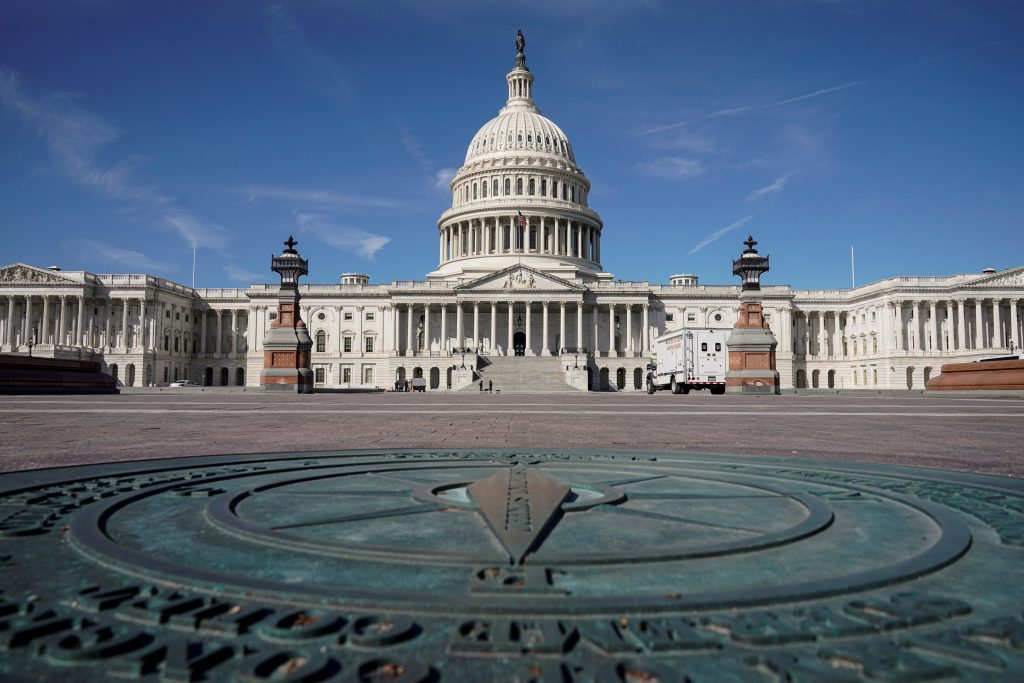Trump Administration to Tighten Asylum Rules as Caravans Approach

As U.S. troops unfurl concertina wire along the banks of the Rio Grande, the Trump administration is preparing to announce new measures Thursday to fence off the U.S. immigration system by denying migrants the ability to seek asylum in the United States if they enter illegally.
The restrictions would rely on emergency powers invoked by the president to implement his “travel ban” in early 2017, according to U.S. officials with knowledge of the plans. Legal challenges seeking to delay or block the asylum restrictions are expected to follow.
The measures have been prepared over the past several weeks to satisfy President Donald Trump’s demand for ways to thwart caravan groups moving north through Mexico with an estimated 7,000 to 10,000 Central Americans.
Privately, Homeland Security officials acknowledge the new restrictions, at least on their own, are unlikely to achieve the kind of immediate deterrent effect the White House desires.
Detention capacity at U.S. immigration jails are already nearly maxed out, and court-imposed limits on the government’s ability to hold children in immigration jails for longer than 20 days mean most migrant families who arrive seeking protection are still likely to be released pending a hearing.
Under U.S. immigration laws, foreigners who arrive on American soil stating a fear of return can request asylum as a shield against deportation. A U.S. asylum officer then conducts an interview to determine if the person has a “credible fear” of persecution, in which case the applicant is typically assigned a court date and released from custody.
Soaring numbers of migrants have entered the United States taking this administrative path in recent years, often crossing illegally to turn themselves in to U.S. border agents. Since 2014, asylum claims at the border have increased fourfold, adding to a backlog of more than 750,000 pending cases in U.S. immigration courts.
The new measures under preparation would continue to allow foreigners to request asylum if they enter the country legally at U.S. ports of entry, but not those who cross without authorization, according to officials familiar with the plans.
With so many asylum seekers arriving at border crossings, U.S. customs officers have been limiting the number of people allowed to approach the pedestrian entry lanes, a tactic known as “metering” that has triggered challenges in federal court.
U.S. Customs and Border Protection officials defend the practice on the grounds that the border crossings are not equipped to process hundreds of asylum seekers daily, and officers must continue to facilitate ordinary cross-border travel and trade while protecting the country from terrorists and drug-runners.
It is unclear how many of the migrants traveling in the caravans will approach the ports of entry and attempt to enter legally. In recent weeks the wait at some crossings has stretched to several days or more, and in Tijuana the list of asylum seekers has grown to more than 1,000 people.
Those delays increase the chances that caravan members could attempt to cross illegally by fording the Rio Grande or trekking through the desert to set foot on U.S. soil and surrender to Border Patrol agents.
Under the proposed rule changes, migrants who cross illegally would be ineligible for asylum, but they could still be spared from deportation by qualifying for a lesser status known as “withholding of removal.”
That status does not give foreigners a path to a green card or citizenship, and instead functions as a kind of provisional suspension of the deportation process, revocable at any time. Nonetheless, it would still give those who cross illegally a way to get into the immigration court backlog and released from custody, especially those who are traveling with children.
“Congress very specifically said you can apply for asylum if you arrive in the United States regardless of whether you’re at a port of entry,” said Omar Jadwat, director of the American Civil Liberties Union’s Immigrants’ Rights Project. “They clearly and explicitly meant to make asylum available to anyone who reaches the United States.
“We do this because of our obligations under international law and who we are as a country, and what we understand our role to be in terms of protecting people fleeing persecution,” added Jadwat, who said ACLU attorneys have been anticipating the measures and reviewing legal options. “If the president doesn’t like what the law says, the way to address it is to get Congress to pass a new one.”
An early draft of the proposal reviewed by The Washington Post asserted the president can use his authority under Section 212(f) of the Immigration and Nationality Act to declare certain migrants ineligible for asylum for national security grounds.
The section is the same legal authority President Trump asserted to bar foreigners from certain Muslim-majority countries from coming to the United States under the “travel ban” in early 2017.
The ban drew multiple legal challenges and forced the administration to issue three different versions before a revised ban was upheld in June by the Supreme Court on a 5 to 4 vote.
To Read The Full Story
Are you already a subscriber?
Click "Sign In" to log in!

Become a Web Subscriber
Click “Subscribe” below to begin the process of becoming a new subscriber.

Become a Print + Web Subscriber
Click “Subscribe” below to begin the process of becoming a new subscriber.

Renew Print + Web Subscription
Click “Renew Subscription” below to begin the process of renewing your subscription.





